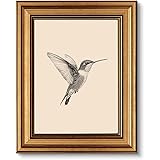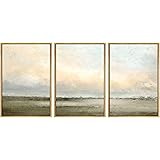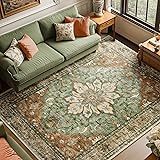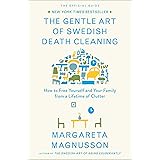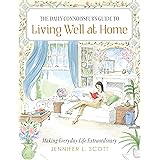Reports indicate that up to 40% of residential interior design projects face post-completion adjustments due to overlooked practicalities or aesthetic misalignments. Such modifications frequently incur significant additional costs, often inflating initial budgets by 15-20%. In the insightful video featured above, an expert interior designer meticulously delineates several critical interior design mistakes that are frequently encountered in contemporary homes. These common pitfalls often undermine both the functionality and visual coherence of a space. Understanding these errors is paramount for achieving a sophisticated and enduring aesthetic. This detailed guide expands upon these crucial insights, providing a deeper analysis of prevalent design blunders and offering strategic alternatives for a meticulously crafted environment.
Avoiding Open Kitchen Shelving and Impractical Canisters
Open kitchen shelves are frequently debated in design circles. While they can present a visually appealing display, their functional disadvantages are substantial. Dust and cooking oils accumulate rapidly, necessitating rigorous and constant cleaning. Consequently, these shelves are best reserved for purely decorative items, never for daily-use crockery. A functional object’s removal creates an immediate imbalance in the curated aesthetic.
The concept of “display” rather than “storage” is crucial here. If a shelf is meticulously arranged with decorative plates, its appearance is compromised when items are removed for use. Empty spaces disrupt the visual harmony that was initially established. This distinction is often overlooked, leading to an untidy and incomplete appearance. Intentional design dictates that every element serves a specific purpose, either practical or aesthetic, but rarely both simultaneously on open display.
Glass canisters for food storage present similar challenges. Despite their charming appearance, particularly in country-style kitchens, they are inherently impractical. The diminishing contents of a canister quickly detract from its aesthetic appeal. Furthermore, proper hygiene mandates regular washing before refilling, which again leaves empty spaces on display. Health concerns regarding mixing old and new ingredients are also significant. Instead, opaque ceramic canisters are recommended, or items with concealed contents. However, labeling becomes essential, which can itself be a visual disruption, further highlighting the complexities of open storage solutions.
Navigating Outdated Trends and Enhancing Shelf Curation
The Impermanence of Trends: Beyond White Kitchens
Design trends are cyclical; yesterday’s staple becomes today’s dated aesthetic. For example, the all-white kitchen, while once ubiquitous, is currently considered passe in many expert circles. Personal preference remains paramount, but awareness of current interior design mistakes related to trends is advised. A similar critique is directed towards simplistic white brick designs, often perceived as basic and uninspired. A professional designer’s objective is to create a timeless look, transcending fleeting fads.
Beyond color palettes, the curation of open shelving is a critical area where errors are common. Randomly placed items, often acquired without a cohesive vision, contribute to a cluttered rather than collected look. Transparent glass items, for instance, frequently blend into the background, failing to contribute visual weight or interest. Their lack of definition can make a shelf appear sparse, rather than intentionally minimalist. An empty shelf is often preferable to a haphazardly filled one, as thoughtful negative space can contribute to a more sophisticated aesthetic.
Achieving Sophisticated Country Style
The misconception that country style implies cheap or overly rustic elements is a frequent one. Rather than dollar-store net bags or overtly “lived-in” towels, high-quality items should be selected. Authentic country aesthetics are often achieved through natural materials, artisanal crafts, and carefully chosen textiles. A high-quality wood, stone, or ceramic item can evoke rustic charm without sacrificing elegance. The key lies in deliberate selection and investing in pieces that convey craftsmanship and durability, ensuring that the space feels curated and inviting, not merely informal.
The Perils of Reflective Surfaces: Mirror and Glass Furniture
Mirror-Surface Furniture: A High-Maintenance Design Element
Mirror-surface furniture, while initially striking, is fraught with practical challenges. Fingerprints and smudges are instantly visible, demanding constant cleaning. Studies confirm that households with reflective furniture report up to 70% more frequent surface cleaning compared to those with matte finishes. Furthermore, glare from sunlight or artificial lighting can be intensely harsh on the eyes. The reflective quality can also make a room feel excessively busy, as every surrounding object is visually duplicated. This optical phenomenon can overwhelm a space, making it appear smaller and more chaotic than it actually is. Scratching is also a common issue, significantly degrading the surface’s pristine appearance over time.
Glass Tables: Aesthetics Versus Practicality and Safety
Glass coffee and dining tables present similar issues to mirror furniture, compounded by additional safety concerns. Fingerprints are highly visible, and the transparency, while sometimes intended to make a small room appear larger, often causes the table to visually “disappear.” This absence of visual weight can diminish the table’s impact as a statement piece in a living or dining area. For families, especially those with children, the sharp edges and fragile nature of glass pose a significant safety hazard. Instead, robust alternatives are typically recommended.
Walnut or oak tables, for instance, introduce warmth and timelessness into a room. Their natural grain and texture add depth and character, providing a strong focal point. Marble tables offer a luxurious option, though careful consideration of maintenance is required. Darker marble varieties are more forgiving of stains and spills. Alternatively, a round coffee table crafted from wood or a durable composite can offer both safety and style, particularly in high-traffic areas. Upholstered ottomans, when treated with stain-resistant coatings, provide a soft, safe option, although their aesthetic appeal is often debated among professional designers.
Strategic Upholstery Choices: Seating for Comfort and Durability
Dining Chairs: Balancing Style with Practicality
The selection of dining chairs requires a careful balance between aesthetic desire and everyday practicality. While light-colored fabric chairs possess undeniable elegance, they are highly susceptible to stains and spills. This is particularly true in homes with children, where spills are a frequent occurrence. Textured fabrics like boucle, while trending, present significant challenges for crumb removal and deep cleaning. Expert recommendations often involve opting for smoother fabrics with advanced stain-resistant coatings. Such materials allow for easier cleanup and longer-lasting pristine appearances. Darker hues or patterns can also effectively camouflage minor blemishes, extending the perceived lifespan of the upholstery.
Sofas: The Core of Living Room Comfort and Style
Sofa selection is a pivotal decision, as it occupies a significant visual footprint in the living room. Leather couches, both genuine and faux, exhibit distinct advantages and disadvantages. Genuine leather requires consistent conditioning to prevent drying and cracking, representing a notable maintenance commitment. Faux leather, conversely, often suffers from peeling after only a few years of use. Both materials also exhibit temperature fluctuations, feeling cold in winter and sticky in summer, compromising year-round comfort. Research shows that fabric sofas generally provide a more consistent tactile experience across seasons.
Velvet, a currently popular fabric, presents its own set of maintenance challenges. The pile of the fabric tends to mark easily with touch, creating visible darker spots that require frequent brushing. Cloud couches, while celebrated for their plush comfort, often lose their shape rapidly, leading to poor posture and a prematurely worn appearance. Investing in high-quality, sturdy fabric for sofas is therefore strongly advised. A robust fabric retains its shape, resists wrinkling, and provides lasting comfort. Personal testing of a sofa’s feel and recovery is recommended before purchase. This ensures alignment with both ergonomic and aesthetic expectations, mitigating common interior design mistakes related to comfort and durability.



